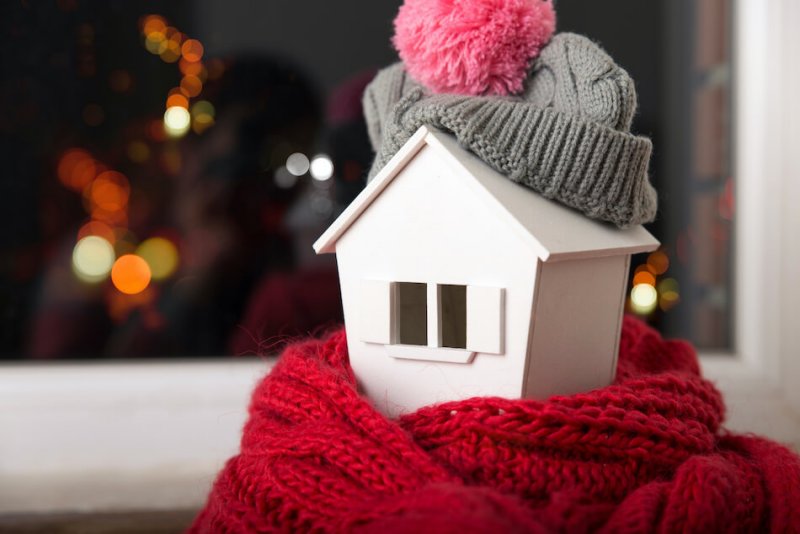
As the vibrant palette of autumn gives way to the stark, elegant beauty of winter, a shift occurs not just in the landscape but in the responsibilities of a homeowner. The transition into the colder months demands more than just unpacking cozy sweaters; it requires a proactive and systematic approach to safeguarding your largest investment your home. Proper winterization is a critical process that serves a triple purpose: it enhances energy efficiency, prevents costly damage, and ensures the safety and comfort of your household throughout the season.
This comprehensive guide will walk you through the essential steps, both interior and exterior, to fortify your home against winters chill.
Part 1: The Exterior Defense - Fortifying Your Home's First Line of Protection
The battle against the elements begins outside. A thorough exterior inspection and preparation are paramount to creating a watertight, resilient envelope.
1. Roof and Gutters: The Water Management System Your roof and gutter system is your primary defense against water intrusion, which, when frozen, can cause immense damage.
- Gutter Cleaning: Clogged gutters are a leading cause of ice dams and water backup. Clear all leaves, twigs, and debris to ensure meltwater can flow freely away from your roof and foundation. Consider installing gutter guards to minimize future maintenance.
- Downspout Extension: Ensure downspouts direct water at least 5 to 10 feet away from your homes foundation. This prevents water from pooling, freezing, and potentially causing cracks or basement leaks.
- Roof Inspection: Visually inspect your roof for damaged, cracked, or missing shingles. Look for signs of wear around flashing, vents, and chimneys. Addressing minor repairs now prevents leaks that can lead to structural rot and mold growth inside your walls and attic.
2. Windows and Doors: Sealing the Envelope Drafty windows and doors are the single greatest source of heat loss in most homes, drastically increasing heating costs.
- Weatherstripping: Inspect and replace worn weatherstripping around all operable windows and doors. A tight seal is your best defense against cold air infiltration.
- Caulking: Examine the exterior caulking around window and door frames. Cracked or shrunken caulk should be removed and replaced with a high-quality, paintable silicone or acrylic latex caulk to seal gaps.
- Storm Windows: If you have storm windows, install them. For single-pane windows, consider applying an interior window insulation kit a clear plastic film that creates an insulating air gap as a cost-effective temporary solution.
3. Plumbing Faucets and Irrigation: Preventing the Freeze Frozen pipes can burst, leading to catastrophic water damage and incredibly expensive repairs.
- Disconnect and Drain: Shut off the water supply to all exterior faucets (hose bibs). Open the exterior faucet to drain any remaining water and leave it open. Store hoses indoors to prevent damage.
- Irrigation System: If you have an in-ground sprinkler system, it is imperative to have it professionally blown out with compressed air to clear all water from the pipes and heads. Water left inside will freeze and crack the PVC piping.
4. Yard and Landscape: Tidy and Secure A well-maintained exterior prevents damage and accidents.
- Trim Trees: Prune tree branches that hang too close to your home or power lines. Heavy snow and ice can weigh them down, causing them to snap and cause damage.
- Store Outdoor Furniture: Clean and store patio furniture, grills, and other outdoor items. If storage isn't possible, cover them securely with durable, weatherproof covers.
Part 2: The Interior Strategy - Optimizing for Efficiency and Comfort
With the exterior secured, turn your attention inward to ensure your home's systems are running safely and efficiently.
1. Heating System: The Heart of Your Home Your furnace or boiler is the workhorse of winter; its maintenance cannot be overlooked.
- Professional Servicing: Schedule an annual inspection and tune-up with a qualified HVAC technician. They will clean components, check for carbon monoxide leaks, ensure efficient combustion, and identify potential problems before they lead to a costly mid-winter breakdown.
- Filter Replacement: Replace your furnace filter at the beginning of the season and check it monthly. A clean filter improves air quality, protects your furnace from dust and debris, and maintains optimal airflow, which directly impacts efficiency.
- Thermostat Upgrade: Consider installing a programmable or smart thermostat. These devices allow you to automatically lower the temperature when you are asleep or away, reducing energy consumption without sacrificing comfort.
2. Insulation and Airflow: Retaining Warmth Heat rises, and without proper insulation, it will simply escape into the attic and out of your home.
- Attic Inspection: Check your attic insulation. The U.S. Department of Energy recommends an R-value between R-38 and R-60 for most climates, which typically translates to about 10 to 16 inches of fiberglass or cellulose insulation. Ensure it is evenly distributed and not compacted.
- Ventilation: Proper attic ventilation is crucial. It allows cold air to enter through soffit vents and warm, moist air to exit through ridge or roof vents, preventing ice dams by maintaining a consistent roof temperature.
3. Fireplace and Chimney: Cozy and Safe A fireplace offers warmth and ambiance but requires careful attention.
- Chimney Sweep: Have your wood-burning fireplace and chimney professionally cleaned and inspected annually. Creosote buildup is a significant fire hazard. The inspector will also check for obstructions like bird nests and ensure the damper opens and closes properly.
- Damper Seal: When not in use, ensure the damper is fully closed. An open damper is like leaving a window wide open, letting precious heated air escape.
4. Emergency Preparedness: Planning for the Unexpected Winter storms can bring power outages. Being prepared ensures your family's safety and comfort.
- Check Alarms: Test all smoke detectors and carbon monoxide (CO) detectors. Replace batteries and ensure the units are not past their expiration date (typically 7-10 years). CO poisoning risk increases in winter when homes are sealed tight and fuel-burning appliances are in constant use.
- Assemble a Kit: Prepare an emergency kit containing water, non-perishable food, a manual can opener, flashlights, extra batteries, a first-aid kit, and blankets. Consider alternative heat sources like a properly vented generator or wood stove, but always prioritize safety to prevent fire and CO risks.
- Pipe Insulation: For extra protection, insulate pipes in unheated areas like basements, crawl spaces, and garages with foam pipe insulation. On nights of extreme cold, allowing a slight drip from faucets can also keep water moving and prevent freezing.
Conclusion: An Investment in Peace of Mind
Winterizing your home is not merely a seasonal chore; it is a strategic investment in its long-term integrity, your financial efficiency, and your family's well-being. The process requires a weekend of diligent effort but pays dividends all season long in the form of lower utility bills, avoided repair catastrophes, and the profound comfort of knowing your home is a secure, warm haven against the elements outside.
By taking a methodical, professional approach to both the exterior and interior of your property, you can welcome the winter season not with trepidation, but with confidence and preparedness.







0 Comments
Post Comment
You will need to Login or Register to comment on this post!